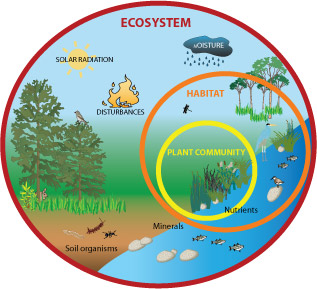Bio-Diversity Information Centre in state of neglect (Feature)
 Narayan Dhungana / Chitwan : The Bio-Diversity Information Centre, established at Tikauli of Ratnanagar-7 in Chitwan district, is itself without information.
Narayan Dhungana / Chitwan : The Bio-Diversity Information Centre, established at Tikauli of Ratnanagar-7 in Chitwan district, is itself without information.
Although linking with east-west highway at Ratnanagar and situated near Sauraha, the third most popular tourist destination of the country, the information centre is like darkness under light. Hundreds of tourists from Sauraha come to visit the nearby Bishajari pond, but no tourist entrepreneur thinks of taking tourists to the centre.
The centre, where one can easily get information about the flora and fauna as well as observe the rare wildlife trophies, is under the shadow due to the lack of publicity. The bodies concerned are found indifferent to make the centre active.
Chairman of the Information Centre Board of Directors, Rambabu Shrestha, said that there was no effective work in operation at the centre despite taking the necessary initiatives in different sectors. He said hoteliers in Sauraha have no interest to bring the tourists to the centre.
The horn, hoof and skull of rhino have been kept at the first floor of the centre. Similarly, the hide and teeth of the Royal Bengal Tiger are also there while, THE skin and different organs of crocodile, the blue bull, python and leopard as well as the gallbladder of bear have been put on display.
There are various information related materials about wildlife including the copies of different conventions and the Wildlife Conservation Act in the ground floor of the centre. An employee, Sunita Ghimire, who looks after the centre, said that although the centre is very important in terms of information about the rare wildlife and their organs, it lacks tourists.
Ghimire said, “The Information Centre itself has become information-less. It would be better if tourists are brought from Sauraha. But no one give interest on it.”
Established on April 12, 2007, the Centre was constructed with the financial support of Rs 5 million provided by the World Wildlife Fund (WWF). According to the Tarai Arc Landscape programme, the centre was established as a facility to provide information to the tourists, who do not have time to visit the Chitwan National Park.
Tikauli Buffer Forest and Panchakanya Community Forest are jointly taking initiatives for the protection of the centre. The locals, however, blamed both community forest users committees for not paying interest in its protection and shying away from responsibility blaming each other. The Tikauli Buffer Forest users committee says it has handed over the centre’s management to the Panchakanya community forest users committee and vice-versa. So, the number of tourists visiting the centre is decreasing every year.
Admitting that the Committee could not carry out works as per the plan, Chairman Shrestha said that problems have been faced due to financial crunch. He added that they have been asking for money from the community forests even to pay salary to the only employee at the Centre.
The statistics of the centre shows that it hardly earns Rs 3,000 in a year. The Centre has not welcomed a single foreign tourist till the date in the current fiscal year. Ghimire said students of a school visited the centre in the month of Bhadra while students of two other schools on the month of Kartik.
The centre has fixed five rupees as entry fees to students, Rs 10 to domestic tourists and Rs 50 to foreign tourists.
Conservationist Ramesh Ranamagar expressed hope that tourists could be attracted to the centre if there was publicity along with its protection. He further said that Ratnanagar Municipality should pay attention for the protection of the centre as it is located in the municipality and has made the municipality renowned.
Wildlife parts at centre start decomposing
The organs of wildlife kept at the center have started to decay for lack of proper conservation.
Chairman Shrestha said preparation was underway to bring new wildlife parts after removing the decomposed ones. He said, “Our effort alone is not enough for the protection and promotion of the centre. Support of different organisations including tourism entrepreneurs is necessary.”
The centre has now organs of 14 species of wildlife. Most of them are in a decomposed condition. RSS
